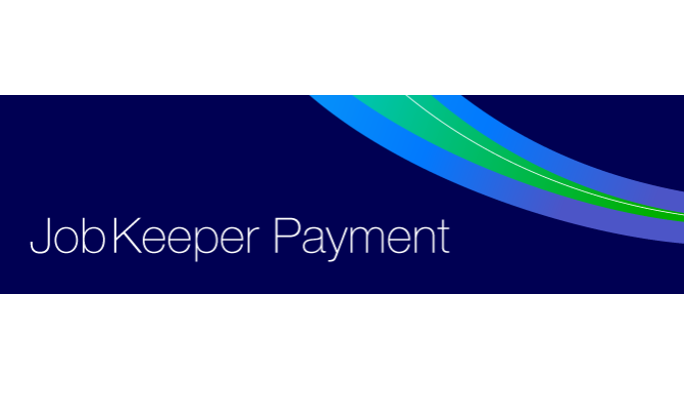JobKeeper payments – update
Martin Sinclair Apr 14

On Wednesday (8th April 2020), amidst the ongoing health and economic challenges created by the COVID-19 pandemic, the Federal Government passed the Coronavirus Economic Response Package Omnibus (Measures No 2) Bill 2020 (the Bill), which will take effect on the day after the Bill receives Royal Assent.
The Bill does not deal with how JobKeeper payments are to be made or administered, as well as other issues (that will be relevant to employers), which we expect will be detailed shortly by the Government.
As part of the member benefits, HRIA partners, MST Lawyers have produced a detailed document outlining the requirements for businesses with an annual turnover of less than $1billion.
What is the JobKeeper scheme
The JobKeeper scheme provides a wage subsidy for businesses. Payments under the scheme will commence from 1 May 2020, but businesses may be retrospectively
reimbursed to 30 March 2020. Under the scheme, eligible businesses will be paid $1,500 per fortnight for each eligible employee.
What is an eligible business
To be eligible for the scheme, a business must demonstrate that its turnover has reduced (or will be reduced) by greater than 30% when compared to the same corresponding period in the prior year. On present indications, it is assessed on a monthly basis.
If you believe your business may be eligible, you should now apply to the Australian Taxation Office.
Who is an eligible employee
An eligible employee is an employee who meets each of the following criteria:
- was employed as at 1 March 2020, and remains employed, by an eligible employer in either a full time, part time or long-term (regular and systematic basis over 12 months) casual basis; and
- must be at least 16 years old, be an Australian citizen or permanent resident, or hold a special qualifying
visa.
Eligibility extends to stood-down or rehired employees.
Who is an ineligible employee
An ineligible employee includes:
- an employee who receives parental leave pay under the Paid Parental Leave Act 2010;
- an employee who has no capacity for work and is receiving workers’ compensation payments; and
- a casual employee with less than 12 months’ continuous service.
How JobKeeper payments are passed to employees
An eligible employee is entitled to receive the greater of (1) $1,500 per fortnight or (2) their usual wages for hours worked or paid leave taken.
Superannuation remains payable for wages paid with respect to hours worked or paid leave taken. It is not payable on any JobKeeper component.
For additional information on Jobkeeper payments, please visit the ATO site: https://www.ato.gov.au/General/JobKeeper-Payment/
JOBKEEPER ENABLING DIRECTIONS
An eligible employer can reasonably issue one or more of the following “JobKeeper enabling directions” to eligible employees.
1. Direct an employee to reduce their hours of work (including down to nil hours) for a period
(called a “JobKeeper enabling stand down direction”)
The following conditions must be satisfied:
- the employee cannot be usefully employed for their normal days or hours during the period because of changes to business attributable to the COVID-19 pandemic or government initiatives to slow the transmission of COVID-19;
- the implementation of the direction is safe having regard to (without limitation) the nature and spread of COVID-19;
- the employee must be paid their usual wages for work performed or the JobKeeper payment, whichever is greater;
- the employee’s hourly base rate of pay cannot be reduced as a consequence of the direction;
- the employee is not taking leave authorised by the employer and not authorised to be absent during the period; and
- the employer must not unreasonably refuse any request by the employee to engage in reasonable secondary employment, undertake training or professional development.
2. Direct an employee to perform alternative duties for a period
The following conditions must be satisfied:
- the duties are within the employee’s skills and competency to perform;
- the duties are safe to perform;
- the employee has the licence or qualifications necessary to perform the duties; and
- the duties are reasonably within the scope of the employer’s business operations.
3.Direct an employee to work at a location other than at their usual workplace (including their
home) for a period
The following conditions must be satisfied:
- the different work location is suitable for the employee’s duties;
- if the different work location is not the employee’s home, the place does not require the employee to travel a distance that is unreasonable in all the circumstances; and
- the performance of the employee’s duties at the different work location is:
– safe having regard to (without limitation) the nature and spread of COVID-19; and
– reasonably within the scope of the employer’s business operations.
When will a JobKeeper enabling direction not be enforceable
A “JobKeeper enabling direction” will not be enforceable if:
- it relates to a period on or after 28 September 2020;
- it reduces the employees’ base rate of pay;
- it is not in writing;
- it is unreasonable in all of the circumstances;
- the employer did not provide 3 days’ notice to the employee of the intention to issue the direction; or
- the employer did not consult with the employee (or the employee’s representative) about the direction.
A “JobKeeper enabling direction” does not affect accrual for the purposes of leave, redundancy pay
calculations or notice of termination obligations.
JOBKEEPER ENABLING REQUESTS
The Bill also provide an eligible employer the right to make “JobKeeper enabling requests” to an eligible employee that cannot be unreasonably refused by that employee:
1. Request an employee to work on different days and/or times to their usual work time for a period
The following conditions must be satisfied:
- the request does not have the effect of reducing the employee’s number of hours of work (compared with the employee’s ordinary hours of work); and
- the performance of the employee’s duties on those requested days / times are both safe having regard to (without limitation) the nature and spread of COVID-19 and reasonably within the
scope of the employer’s business operations.
2. Request an employee to take a period of annual leave that will not result in the employee having a balance of paid annual leave of fewer than 2 weeks
Other matters
The Bill also allows an eligible employer and an eligible employee to agree for the employee to take twice as much paid annual leave at half the employee’s rate of pay.
Any dispute about “JobKeeper enabling directions” or “JobKeeper enabling requests” can be referred by either party to the Fair Work Commission for dispute resolution (which may include arbitration).
Nothing in the Bill prevents an employee or employer from reach an agreement to vary that employee’s terms of employment.
Where to from here?
All businesses should consider how the latest changes outlined in this update could assist during the COVID-19 pandemic.
Contact the one of our expert employment lawyers for strategic advice about the subject matter.

James Sanders (Associate) james.sanders@mst.com.au
+61 3 8540 0215
+61 419 500 407
Further updates on Jobkeeper eligibility can be found on the HRIA’s dedicated Coronavirus web page: HRIA COVID-19











What happens if you commenced a new business !st October and have had casuals continuosly during this period?
Hi Stephen, I’m not sure the HRIA can answer this specifically. I would recommend a call into MST Lawyers through your member portal to see if they can help.